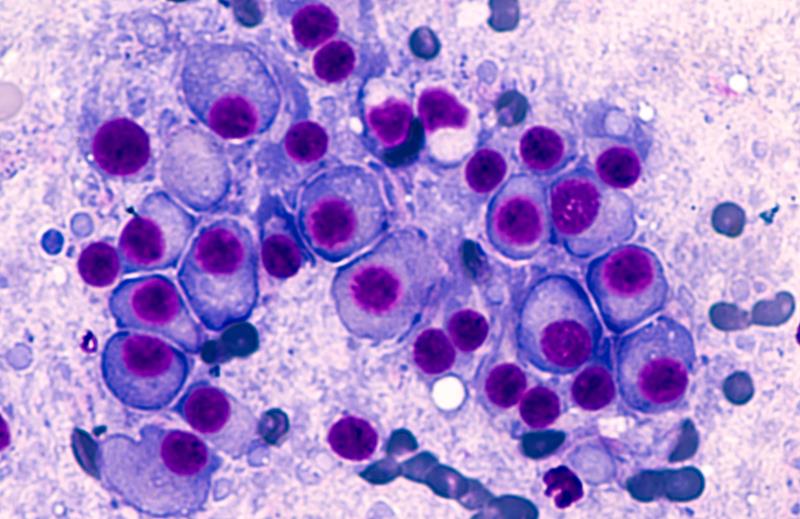
Patients with newly diagnosed multiple myeloma (MM) with suboptimal response to an immunomodulatory triplet regimen benefited from a response-adapted intensification regimen with cyclophosphamide, bortezomib, and dexamethasone (CVD), leading to improved depth of response (DpR) and progression-free survival (PFS), according to outcomes from the Myeloma XI trial.
“From a biological perspective, our results are consistent with the concept that … [the] poor initial response is not an inherent feature of the cancer itself but rather of the therapy administered … This resistance can be overcome by switching to a chemotherapy regimen with an alternate mechanism of action … to induce deep responses and improve outcomes,” said the researchers.
The proteasome-inhibition route
The team evaluated an intensification regimen that includes the proteasome inhibitor bortezomib. Of the 1,217 patients from 110 National Health Service hospitals in the UK who had achieved minimal or partial response (PR) after completing their assigned induction therapy*, 583 were randomized 1:1 to receive CVD** for up to a maximum of eight cycles of 21 days or no treatment. [Lancet Haematol 2019;6:e616-e629]
After a median follow-up of almost 30 months, nearly half of CVD recipients had very good PR or better (43 percent) than those who did not receive CVD, leading to marked improvements in PFS (median, 30 vs 20 months; hazard ratio, 0.60, 95 percent confidence interval, 0.48–0.75; p<0.0001).
Grade 3/4 adverse events in the CVD arm were mostly haematologic, the most common being neutropenia and thrombocytopenia (7 percent each). Most events were mild-to-moderate in severity. There were no treatment-related deaths.
The findings imply that the switch to a proteasome inhibitor-based combination did improve response and PFS in this setting, said the researchers. These were also consistent with evidence corroborating the benefit of proteasome inhibition, particularly in the t(4;14) or del(17p) subsets. [J Clin Oncol 2010;28:4630-4634; J Clin Oncol 2013;31:3279-3287]
However, the substantial fraction of patients who did not proceed with intensification underlines the upfront use of combination regimens, which is the standard of care in the UK, the researchers pointed out. “[Nonetheless,] in the absence of a deep response, agent class should be switched rapidly … with the aim of response intensification to prolong PFS.”
Pre- vs post-transplant approach
While studies have identified DpR as an independent prognostic factor in MM, the optimal timing for achieving maximum response remains unclear. [J Clin Oncol 2017;35:2900-2910; Blood 2015;125:3059-3068]
In Myeloma IX, patients with complete response (CR) prior to autologous haemopoietic stem cell transplantation (aHSCT) had better survival rates than patients without CR. [Blood 2011;118:1231-1238; Haematologica 2012;97:442-450] “This supports … the use of pretransplant intensification rather than post-transplant consolidation [for early achievement of deep responses],” explained the researchers.
Of note is the persistent PFS benefit of CVD in the current study even after the maintenance phase with aHSCT in transplant-eligible patients, underlining the potential of aHSCT alone in improving suboptimal initial response. While this implies maximizing treatment response after transplant, the current findings support pretransplant intensification considering the DpR which, in turn, improved PFS, underscored the researchers.
The promising efficacy and manageable safety profile of CVD support further investigation of response-adapted approaches in this setting, noted the researchers. Further analyses will evaluate patients who have achieved stable or progressive disease following intensification. Long-term follow-up will also look into the differences between achieving CR/very good PR following initial induction as opposed to achieving it after intensification, they added.